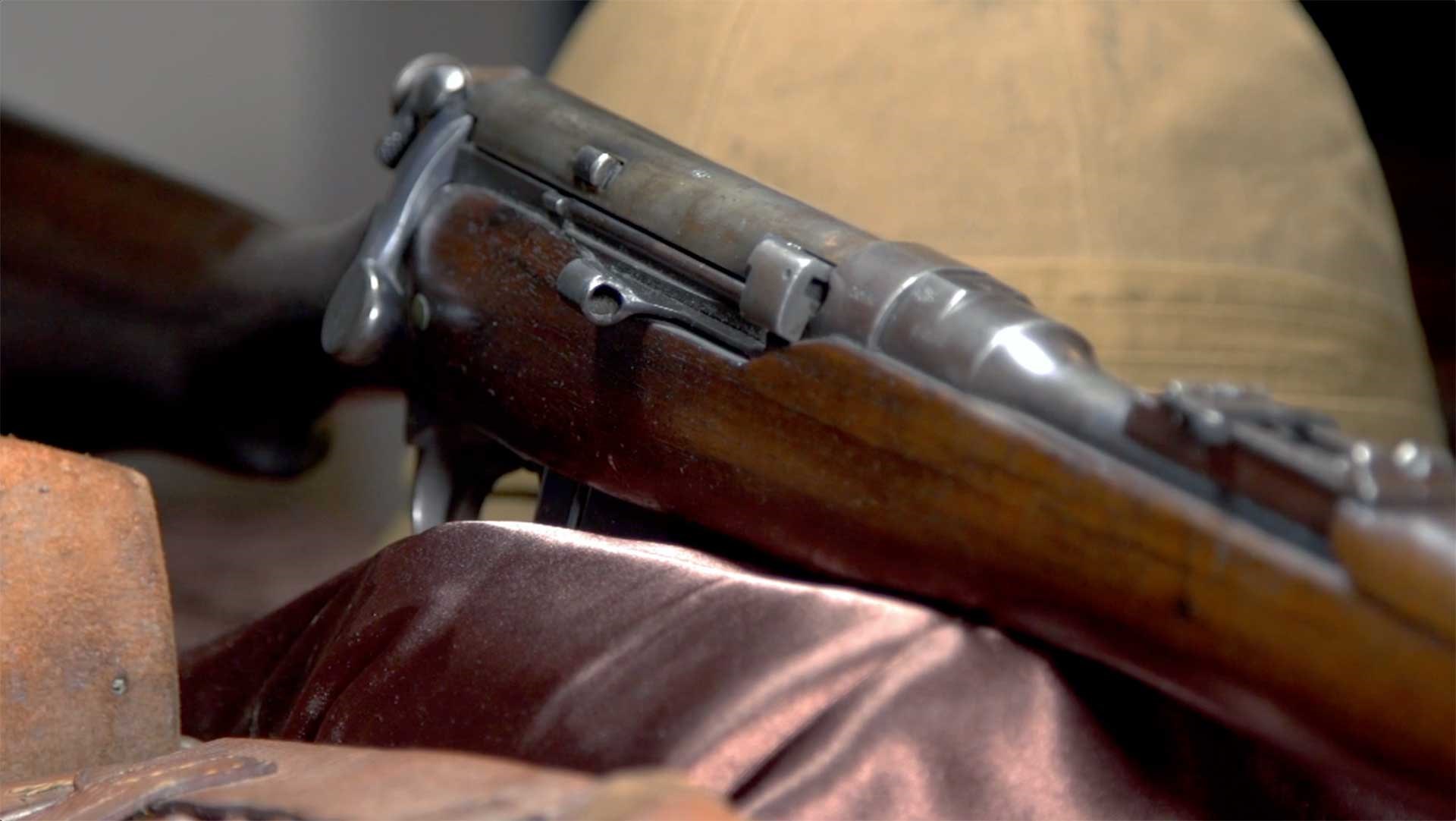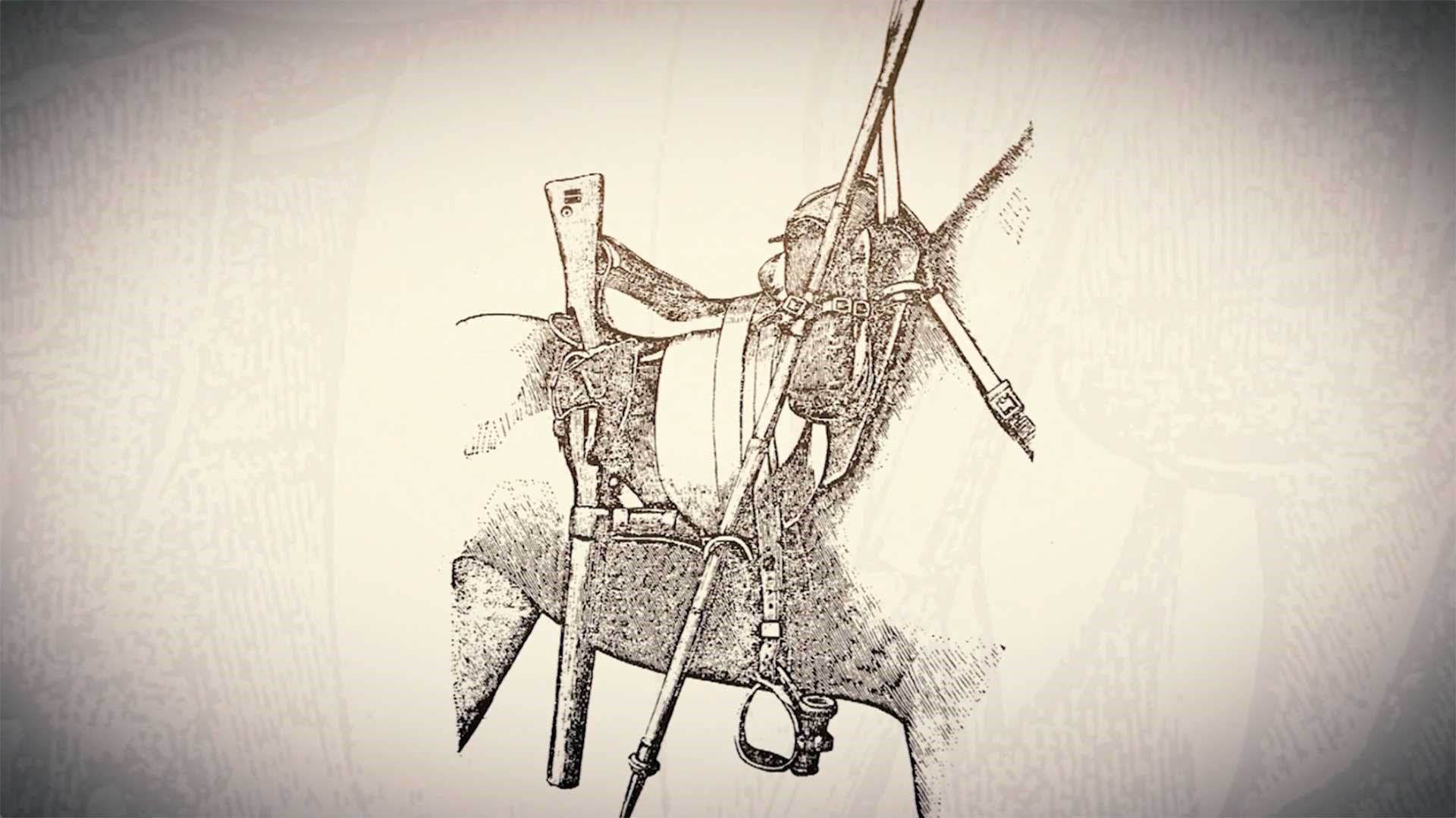The British military adopted a revolutionary bolt-action battle rifle at the end of the 1880s, but in this late Victorian period, cavalry arms had to be designed differently than infantry arms. Because of this, the first Lee-Metfords and Lee-Enfields were divided into longer rifles for the infantry and shorter, sleeker carbines for the cavalry. Watch our "American Rifleman Television" I Have This Old Gun segment above to learn more about the Lee-Enfield carbines.
"When the British military adopts a new small arm, they can't just adopt a new infantry rifle and consider it done. They also have to consider what kind of specialized roles the cavalry performs and what kind of small arm they need in order to perform that role to the best of their abilities," said American Rifleman Executive Editor Evan Brune. "And so what you have is, in addition to the development of the Lee-Metford, and then, subsequently, Lee-Enfield rifles, the long Lees, you have the shorter cavalry carbines."

"The principal difference, besides its length and, of course, the configuration of the nose cap and so forth is the fact that it's only got a six-round magazine," American Rifleman contributor Kenneth L. Smith-Christmas said. "And this [carbine] is carried in a boot along with saddle. And it's very effective during the Second Anglo Boer War."
Several variations of the Lee-Enfield carbine were made. In addition to the Lee-Metford and Lee-Enfield cavalry carbines, a small number of guns were modified to accept the same Pattern 1888 bayonet used on the Magazine Lee-Enfield infantry rifle and were issued to troops in New Zealand. Additionally, the Royal Irish Constabulary adopted the carbine for law-enforcement use, and guns were similarly modified with a nose cap capable of accepting a bayonet.

"The British trooper carried his carbine in a scabbard on his horse, and in combat, it was imperative that the trooper be able to quickly stash the carbine into the scabbard without any danger of it snagging," Brune said. "And so, the entire design of the carbine was really oriented toward ensuring that there were as few snagging points on the gun as possible."
Despite the innovative design of the Lee-Enfield carbine, by the turn of the 20th century, the design was becoming obsolete and would be replaced, ultimately, by the Short, Magazine Lee-Enfield made famous during the First World War.

"By the end of the 19th century, you know, the role of the cavalry is diminishing somewhat," Brune said. "And the British military is really looking at unifying designs and coming up with an option that can work in any role equally well, rather than having dedicated designs for specific roles within the military."
To watch complete segments of past episodes of American Rifleman TV, go to americanrifleman.org/artv. For all-new episodes of ARTV, tune in Wednesday nights to Outdoor Channel 8:30 p.m. and 11:30 p.m. EST.























